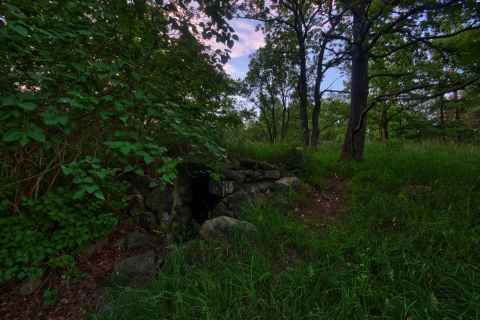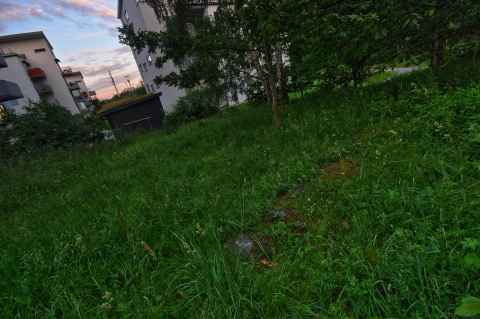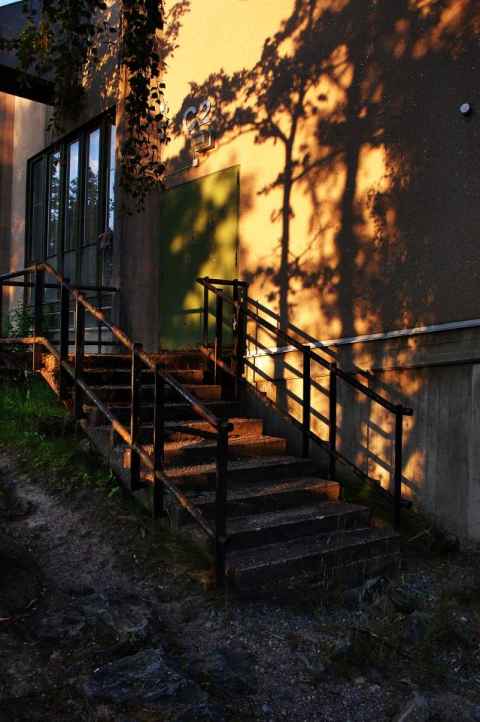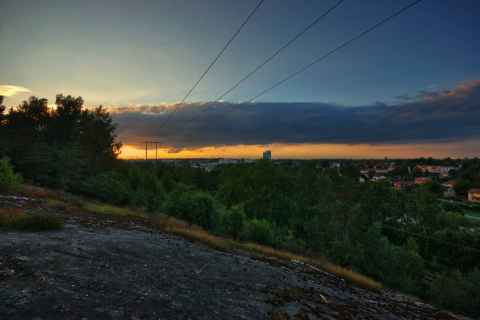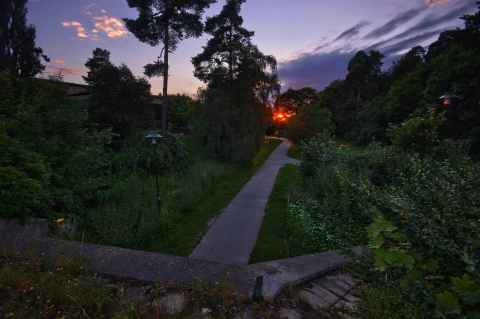Hagsätra
Hagsätra belonged to the Älvsjö gård manor until 1930, when it was incorporated in the growing city of Stockholm. However, it wasn't until 1957 that the area was developed and turned into the Hagsätra of today. The subway station was officially opened three years later, in 1960.
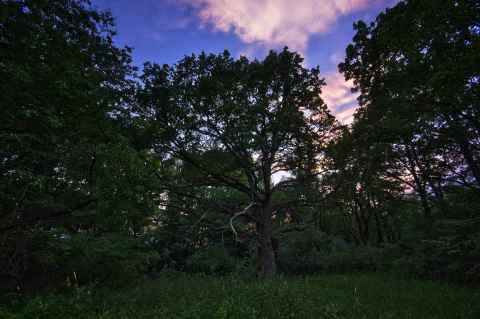
This oak is over 200 years old and has seen Hagsätra transformed from countryside to city suburb. It is the vårdträd of Hagsätra Gård. The vårdträd was, in the folk religion, a dominant tree that stood near the farm and on whose well-being the luck and prosperity of the family were dependent. Damaging the tree, or even breaking off leaves, was sure to result in disease or bad luck. The hustomte[a], or other mythical creatures, were said to live under the tree. While the mythical creatures lack any form of scientific basis, what does have a scientific basis is the fact that, as the highest point near the main building, the vårdträd would function as a primitive lightning-rod, and be hit before the main building was.
2012-07-09 21:05
